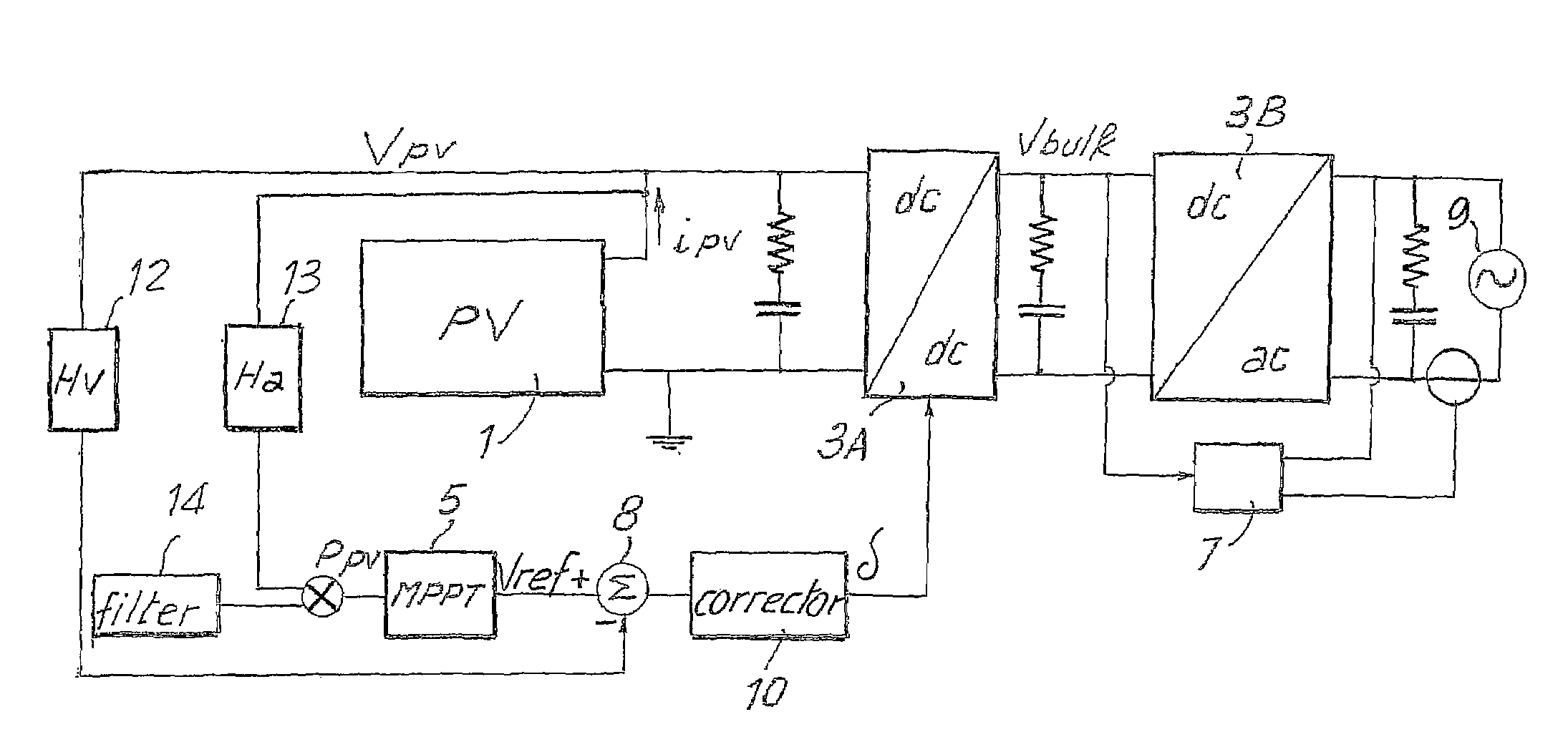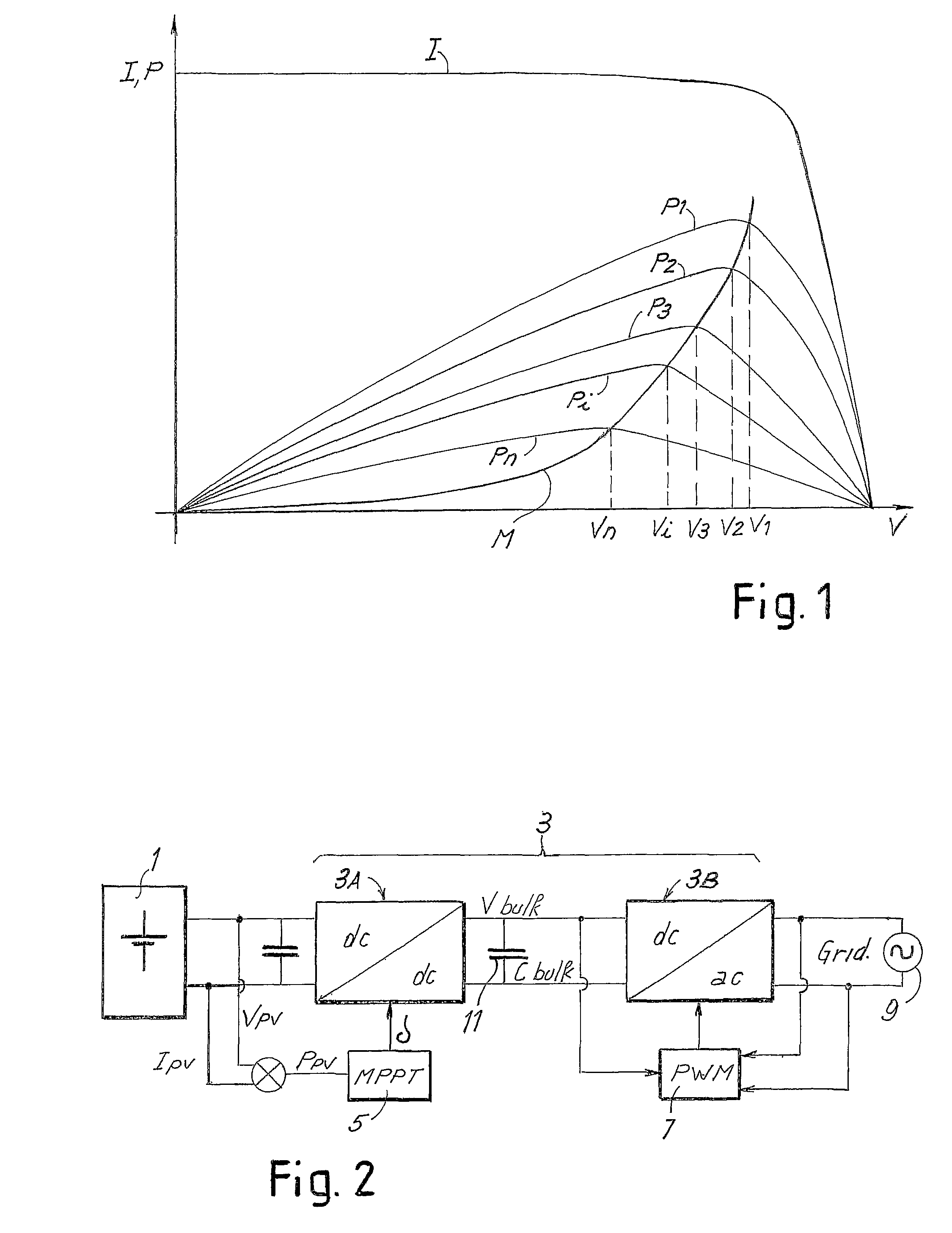System for producing electric power from renewable sources and a control method thereof
a technology of renewable sources and electric power, applied in the direction of dc source parallel operation, circuit arrangement, transportation and packaging, etc., can solve the problems of real dc/ac converters not being able to guarantee, oscillation of points, and consequent degradation of mppt efficiency, so as to reduce the drawback and maintain the preferential point of operation.
- Summary
- Abstract
- Description
- Claims
- Application Information
AI Technical Summary
Benefits of technology
Problems solved by technology
Method used
Image
Examples
Embodiment Construction
[0056]FIG. 6 shows a block diagram of a converter for photovoltaic panels modified according to the present invention. With the same notation used in FIG. 2, designated by 1 is the field of photovoltaic panels and by 3 the converter comprising an input or boosting stage 3A, and an output stage 3B of interface to the network, which is represented schematically by a voltage source 9. The stage 3A is constituted by a DC / DC converter, which sees to boosting the output voltage of the field of photovoltaic panels 1 to the programmed input bulk voltage (Vbulk) of the second stage 3B, which is constituted by a DC / AC inverter. Designated as a whole by 5 is a control block that executes an MPPT function, and designated by 7 is a block for controlling the DC / AC inverter, which maintains the current at output from the inverter in phase with the network voltage, the electrical network being schematically represented by a voltage source 9. The control block 7 comprises the output-current-phase co...
PUM
 Login to View More
Login to View More Abstract
Description
Claims
Application Information
 Login to View More
Login to View More - R&D
- Intellectual Property
- Life Sciences
- Materials
- Tech Scout
- Unparalleled Data Quality
- Higher Quality Content
- 60% Fewer Hallucinations
Browse by: Latest US Patents, China's latest patents, Technical Efficacy Thesaurus, Application Domain, Technology Topic, Popular Technical Reports.
© 2025 PatSnap. All rights reserved.Legal|Privacy policy|Modern Slavery Act Transparency Statement|Sitemap|About US| Contact US: help@patsnap.com



